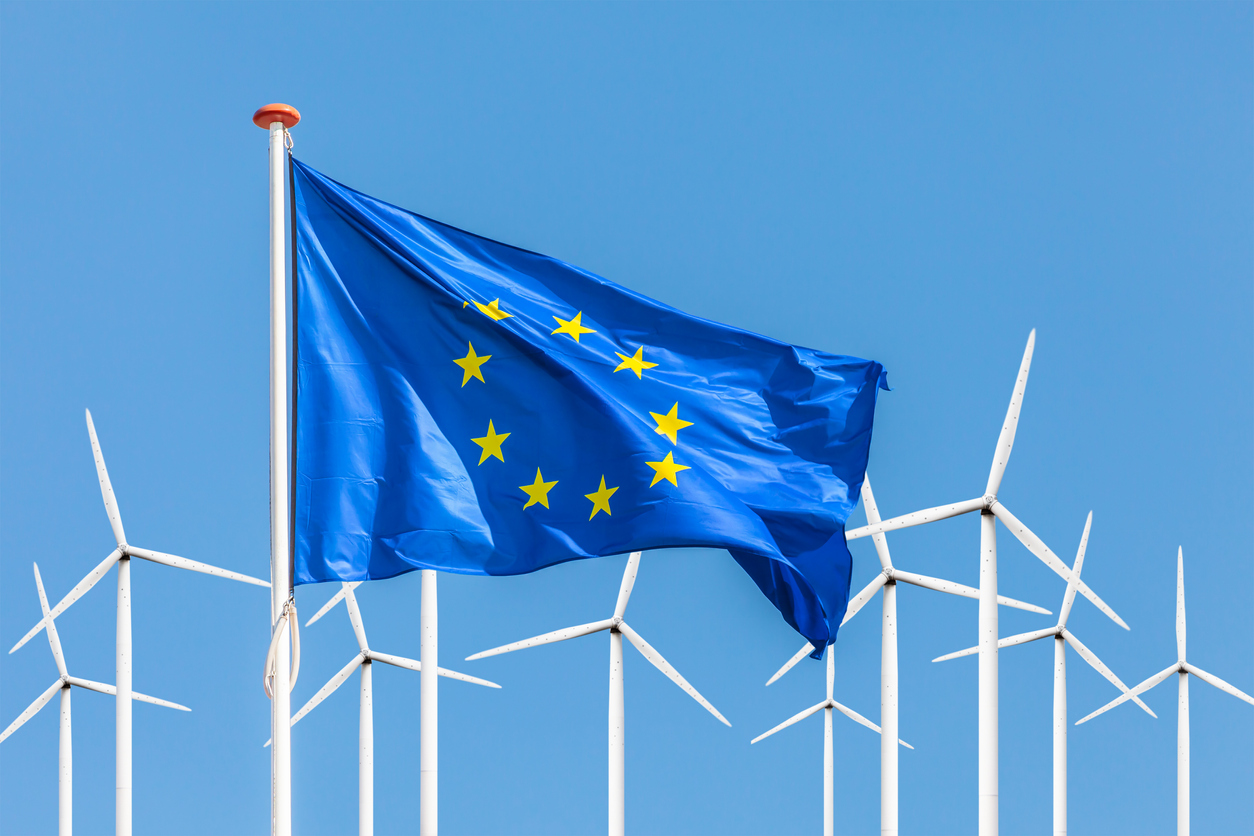
A Guide to The EU Product Environmental Footprint Framework
EU sustainability policy is quickly becoming more complex and interconnected, which means that companies operating in Europe now face increasing pressure to accurately measure and report their environmental performance. One tool that could soon become central to this process is the Product Environmental Footprint (PEF) — a methodology that promises greater harmonisation, transparency, and accountability across the Single Market.
In this article we’ll provide an overview into the PEF framework, exploring how it connects with the EU’s overall sustainability plans, its strengths and limitations, and what you should keep an eye on as this agenda evolves.
Want someone with deep experience and connections in the EU to help guide your sustainability strategy? Get in touch!
Understanding the Product Environmental Footprint Framework
The Product Environmental Footprint is a Life Cycle Assessment (LCA) methodology being developed by the European Commission. Its goal is simple but ambitious: to provide a common way of measuring the environmental performance of products throughout their entire life cycle — from raw material extraction and manufacturing to use and disposal.
This harmonised approach was proposed in 2013 as part of the Commission’s Single Market for Green Products initiative, and is currently being developed for specific sectors through pilot phases, with input from stakeholders from over 20 different industries. It emerged as a response to the growing number of competing environmental labels and claims that often confused consumers and undermined trust.
By offering a robust, science-based framework, the methodology aims to improve comparability across products and sectors, reduce greenwashing, and encourage more informed purchasing and policy decisions. Rather than focusing on a single environmental metric like carbon emissions, the PEF evaluates environmental performance across 16 environmental impact categories, including, but not limited to:
- Climate change
- Ozone depletion
- Human toxicity
- Eutrophication
- Resource use
These categories collectively provide a holistic view of a product’s environmental footprint.
The Framework’s Sectoral Category Rules
While the general PEF framework sets out the overall methodology, sector-specific guidance is developed in the form of Product Environmental Footprint Category Rules (PEFCRs). These rules translate the overarching PEF principles into tailored instructions for specific product groups, ensuring accuracy, relevance, and consistency.
Sector-specific PEFCRs developed in collaboration between industry experts, scientists, and NGOs define how to model supply chains, what data should be used, and how results should be reported. They are developed during the pilot phases and through follow-up projects led by the European Commission in collaboration with industry members, NGOs, and other stakeholders.
There are already several existing or under-development PEFCRs for sectors such as:
- Dairy
- Beer
- Paints
- Batteries
- Apparel & Footwear
Rules for Apparel & Footwear
One of the most notable examples is the PEFCRs for apparel and footwear, which are currently being finalised and should soon be officially approved by the Commission. This rulebook aims to set a science-based standard for measuring the environmental impact of clothing and footwear using more than 60 environmental indicators aligned under the 16 impact categories.
This work has been developed with input from major brands, NGOs, and other stakeholders, and is expected to become a key benchmark for sustainability assessments in the fashion industry.
PEF’s Applications in EU Law and Policy
One of the most closely watched developments related to the PEF is how it could be integrated into the Green Claims Directive (GCD) – an initiative aimed at eliminating misleading environmental claims and ensuring that sustainability statements made in the EU are backed by solid evidence.
While the final scope of the GCD is still under negotiation, the Council of the European Union has proposed that companies making environmental claims could be allowed to substantiate them using methods such as the PEF. If adopted, this would make PEF a central tool for product-level environmental communication in the EU from 2028 onwards which is the GCD date of start of application.
Industry Perspectives on PEF
The PEF framework benefits from over a decade of development and testing, involving a wide range of stakeholders from across sectors, and many industry players recognise its potential to deliver strategic advantages, such as:
- Environmental performance assessment: It allows companies to gain detailed insights into the environmental hotspots across their supply chains, making it a valuable tool to facilitate compliance with the Green Claims Directive, but also other EU policies.
- Product innovation: Businesses can use PEF data to support internal sustainability efforts, such as redesigning products or rethinking sourcing strategies based on robust environmental data.
- Standardisation: A harmonised EU-wide framework could reduce duplication and confusion caused by competing national or private standards.
Most also agree that a common method for environmental assessment helps improve trust and transparency, both for regulators and consumers.
Concerns and Criticism: What Are the Limitations?
For companies operating in today’s shifting regulatory environment, the PEF offers the promise of a consistent and credible approach to environmental performance measurement. However, it has also attracted criticism, especially in regards to the apparel and footwear sector.
Bias Towards Synthetic Fibres
NGOs and natural fibre associations argue that the PEF currently favours synthetic fibres (e.g., polyester) over natural alternatives (e.g., cotton, wool, flax). This is because synthetic fibres often score better in certain climate-related metrics, while the environmental benefits of natural fibres — such as biodegradability, renewability, and carbon sequestration in soil — are not adequately reflected in the methodology.
Gaps in Environmental Coverage
Another critique coming from industry associations and civil society groups is that the PEF does not yet account for key environmental impacts such as biodiversity loss and microplastic pollution. They warn that the current PEF emphasis on climate change and energy-related impacts risks overshadowing other crucial dimensions of environmental harm.
Despite the creation of policies such as the EU Biodiversity Strategy and of other EU microplastics initiatives, which demonstrate the bloc’s concern with these two areas, it is believed that their exclusion from the framework could undermine the accuracy of PEF-based impact assessments.
The Next Steps for The PEF Framework
The framework is still evolving, but key developments to watch in the coming years include:
- Finalisation of more sector-specific PEFCRs, including for high-impact industries such as food, construction and apparel and footwear.
- Update to the overall PEF framework, to improve the weak spots of PEF based on stakeholder feedback – expected to start by the end of 2025.
- The potential integration into EU legislation, especially the Green Claims Directive, which could make the PEF the go-to tool for environmental substantiation across the bloc.
Looking ahead at the PEF’s future, some fundamental questions remain unanswered:
Will the PEF become the default environmental standard for all product-level regulation in the EU?
How will industries and civil society evolve to strike a balance between scientific rigour, policy demands, and effective consumer communication?
Final Thoughts
The EU Product Environmental Footprint is not just another technical tool. It is fast becoming a strategic matter for companies operating in the EU market. Whether your business manufactures goods, imports products, or operates supply chains across borders, understanding the PEF framework could be critical to future-proofing your sustainability strategy.
If you’re unsure how the PEF might impact your sector or want to explore how to position your company ahead of upcoming regulation, our team is ready to help!
Get in touch to learn more about how our experts can support your business’ sustainability journey.
Want someone with deep experience and connections in the EU to help guide your sustainability strategy? Get in touch!
Join our newsletter to keep up to date with the latest news and information coming out of the EU.


